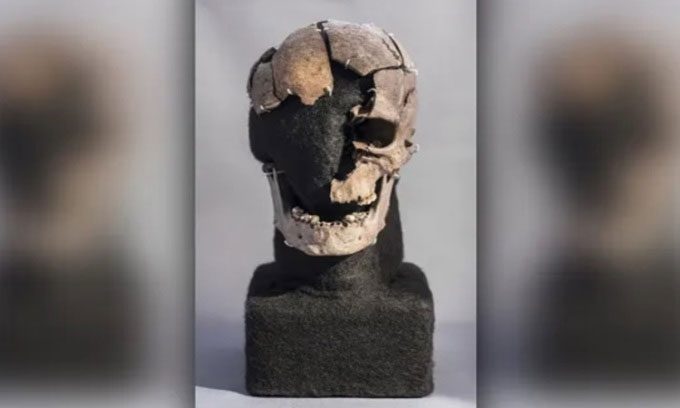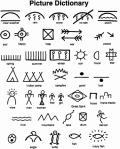Analysis of a 5,000-Year-Old Skeleton Reveals Man Was Bludgeoned at Least Eight Times Before Death.
The skeleton of a man from the Stone Age, nicknamed “Vittrup Man”, was discovered over a decade ago in a peat bog in Denmark, revealing that the deceased was a brutally murdered immigrant. To solve the unresolved case from over 5,000 years ago, researchers investigated everything from dental calculus to DNA. They concluded that he might have been a traveling flint trader who met his end at the hands of hostile local inhabitants, Live Science reports.

Broken skull of Vittrup Man. (Photo: Stephen Freiheit).
In 1915, peat diggers uncovered numerous human and cattle bones at the bottom of a trench near the village of Vittrup in northern Denmark. After discovering a ceramic jar and a wooden stick, the workers contacted the local history museum to report the artifacts. While the two items, dated between 3800 and 3500 BC, were quickly transferred to the National Museum of Denmark for display, the skeleton remained largely unexplored for nearly a decade.
However, two recent studies on the genomes of individuals who lived during the Middle to Late Stone Age in prehistoric Europe revealed that Vittrup Man lived around 3300 – 3100 BC and had a genetic profile distinct from those living locally at the same time. The comprehensive analysis of Vittrup Man’s remains, published on February 14 in the journal PLOS One, reveals a life history that includes migration, dietary changes, and a tragic death far from the man’s homeland. The right heel bone, left shin bone, shattered skull, and jaw with 16 teeth all belonged to Vittrup Man. The skeleton indicates he died at the age of 30 to 40.
Vittrup Man lived during a period in Northern Europe primarily characterized by herding communities, according to a research group led by Anders Fischer, an archaeologist at the Department of Historical Studies at the University of Gothenburg in Sweden. The research team’s analysis of food residues found in dental calculus and elemental differences in his bones and teeth suggests that the deceased may have come from a hunting-fishing tribe in the northern coastal regions of Scandinavia, near the Arctic Circle. Dental calculus forms on everyone’s teeth and cannot be brushed away. It hardens into a plaque rich in DNA and protein that can preserve dietary information for thousands of years. Vittrup Man’s calculus revealed that he consumed fish such as cod and mackerel, as well as whale meat, dolphin, and sheep.
During his teenage years, Vittrup Man’s diet included more freshwater and land-based food sources, according to carbon isotope analysis of his teeth. Changes in Vittrup Man’s diet coincide with geographical shifts. Comparison of strontium and oxygen isotopes in his premolars and wisdom teeth indicates he moved before the age of 12.
Although it is unclear why Vittrup Man migrated, Fischer and colleagues speculate he may have been seeking flint and agricultural products to trade for goods he brought from his homeland. Another hypothesis is that he was enslaved by enemies. Regardless, Vittrup Man met a tragic fate. The shattered condition of his skull resulted from at least eight blows with no signs of recovery, indicating these were fatal injuries. An oval fracture on the skull suggests an impact from a blunt, hard object, possibly similar to the wooden stick found in the bog. Therefore, the research team concluded that Vittrup Man may have been the victim of a homicide or an ambush.





















































